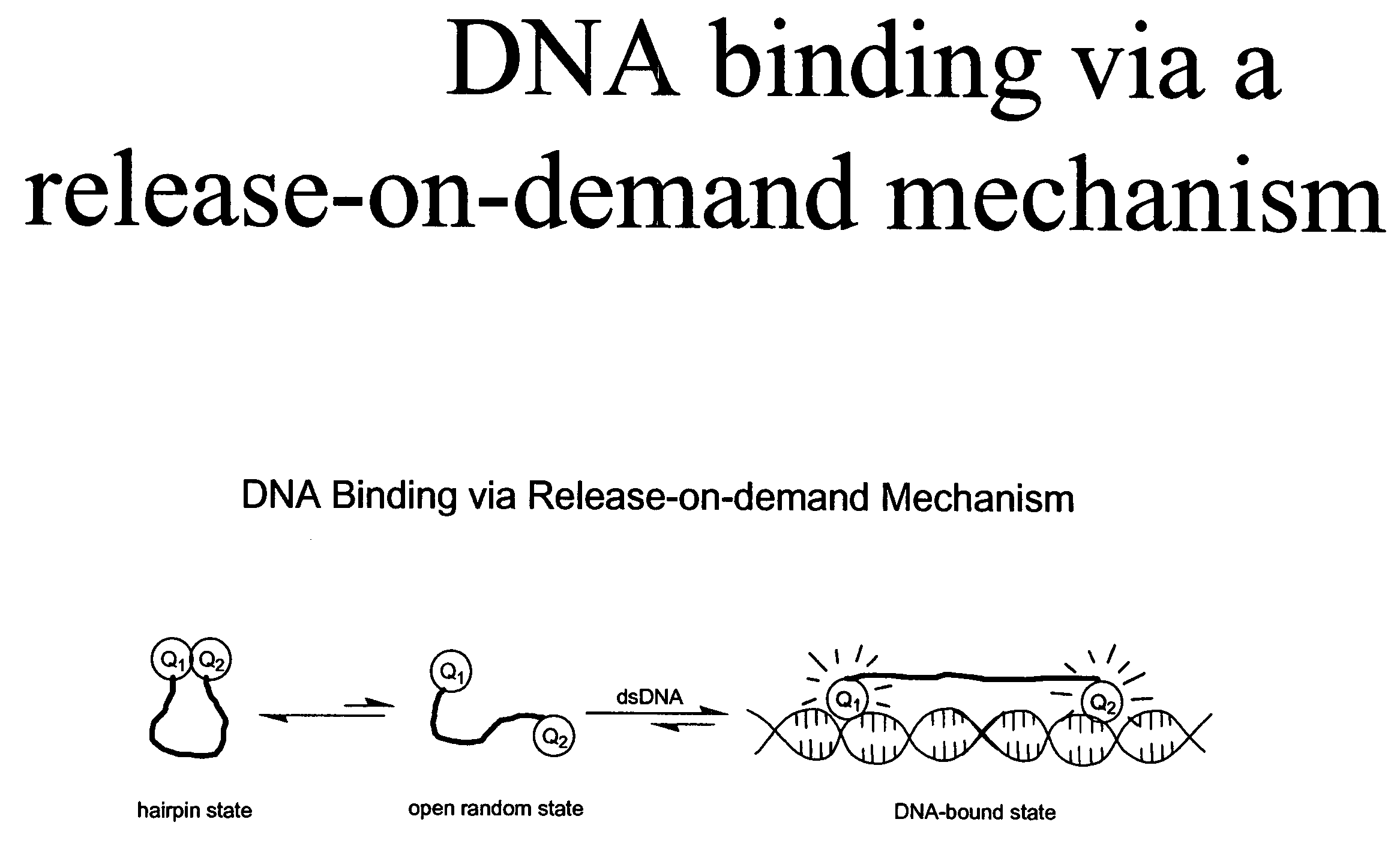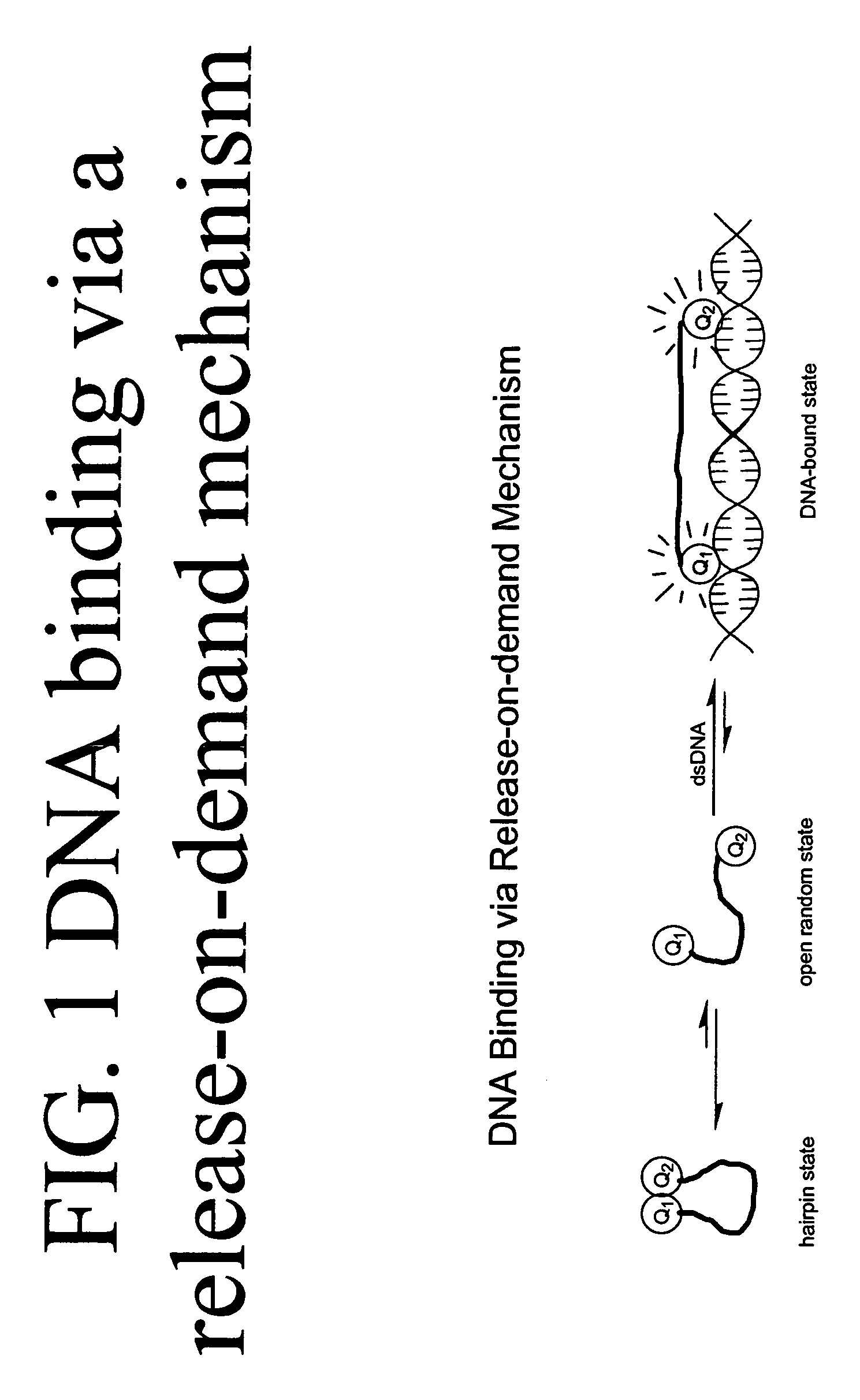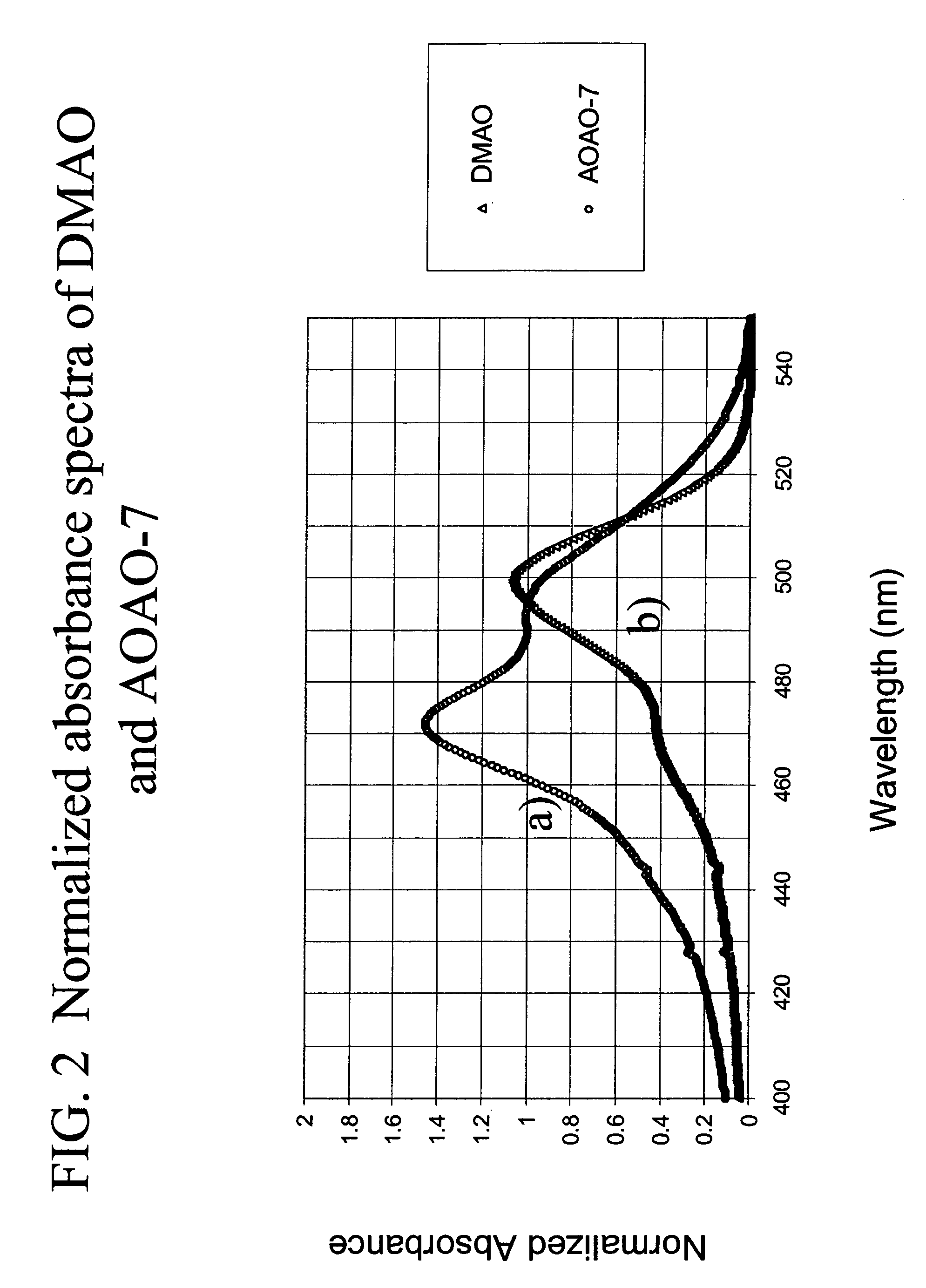Methods of using dyes in association with nucleic acid staining or detection and associated technology
a nucleic acid staining or detection and nucleic acid technology, applied in the field of using dyes in association with nucleic acid staining or detection and associated technology, can solve the problems of inconvenient use, increased human exposure to toxic materials, and low detection sensitivity, and achieve low toxicity, high fluorescent signal strength, and high stability
- Summary
- Abstract
- Description
- Claims
- Application Information
AI Technical Summary
Benefits of technology
Problems solved by technology
Method used
Image
Examples
example 1
Preparation of 10-(3-Iodopropyl)acridine orange, iodide
[0158]One equivalent of 1,3-diiodopropane was added to a suspension of 5 g of acridine orange (Aldrich) in 10 mL of chlorobenzene. The resulting mixture was stirred at 90-100° C. overnight. The hot reaction mixture was poured into ˜200 mL of EtOAc. The orange precipitate was collected by filtration and dried under vacuum, yielding ˜8 g.
example 2
Preparation of 10-(5-Carboxypentyl)acridine orange, chloride salt
[0159]10-(5-Ethoxycarbonylpentyl)acridine bromide was prepared using the procedure of Example 1, with the exception that 1,3-diiodopropane was replaced with ethyl 6-bromohexanoic acid. The crude product (5 g) was suspended in ˜100 mL methanol and 3 equivalents of NaOH dissolved in 30 mL H2O. The suspension was stirred at room temperature for 24 h. Methanol was removed by evaporation, and the remaining aqueous solution was acidified with concentrated HCl. About 50 mL saturated NaCl was added to precipitate the product. The product was collected by filtration and then dried under vacuum at 45° C. for 24 hours.
example 3
Preparation of DMAO (Dye No. 1 of Table 1)
[0160]10-(3-Iodopropyl)acridine orange, iodide (100 mg) was suspended in 20 mL 2M dimethylamine in methanol in a sealed tube and then stirred at 60° C. overnight. The mixture was cooled to room temperature and then poured into 50 mL EtOAc. The precipitate was collected by centrifugation and then dried under vacuum at 40° C. for 24 hours.
PUM
| Property | Measurement | Unit |
|---|---|---|
| pKa | aaaaa | aaaaa |
| pKa | aaaaa | aaaaa |
| pH | aaaaa | aaaaa |
Abstract
Description
Claims
Application Information
 Login to View More
Login to View More - R&D
- Intellectual Property
- Life Sciences
- Materials
- Tech Scout
- Unparalleled Data Quality
- Higher Quality Content
- 60% Fewer Hallucinations
Browse by: Latest US Patents, China's latest patents, Technical Efficacy Thesaurus, Application Domain, Technology Topic, Popular Technical Reports.
© 2025 PatSnap. All rights reserved.Legal|Privacy policy|Modern Slavery Act Transparency Statement|Sitemap|About US| Contact US: help@patsnap.com



